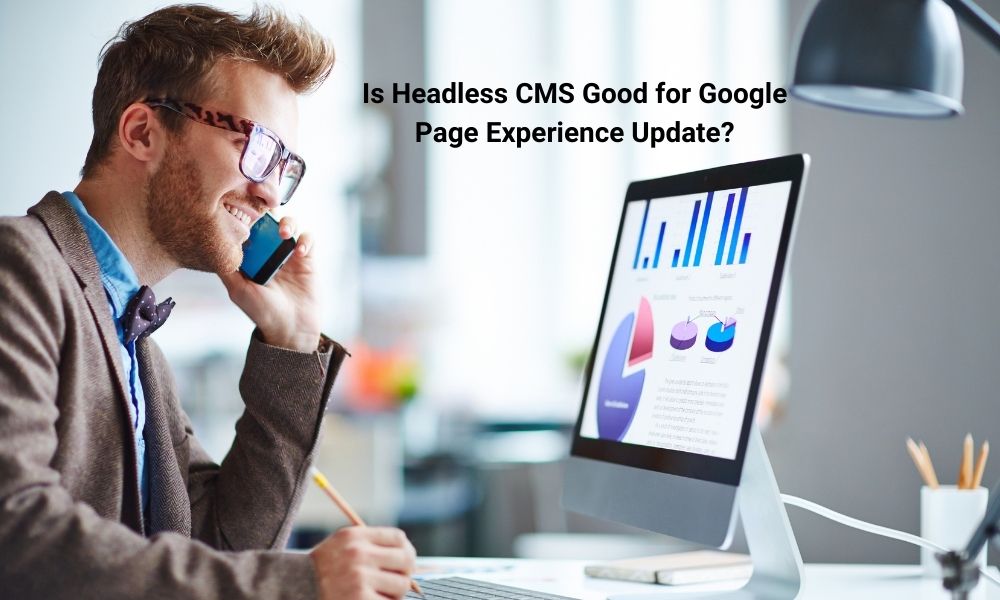Google is regularly updating its ranking algorithms. While some are very significant, such as the mobile-first approach update and passage ranking update, others are so trivial that they have an almost negligible impact on your rankings.
While Google releases some algorithms without prior notice, others are announced months before the release. One such algorithm update is the Google Page Experience update, announced in November of 2020 and is expected to release in June 2021.
All this spare time of seven months has been provided to online businesses and websites to prepare for the update. If you are not sure how you can keep up with the Page Experience update, this blog will help you understand the need for a headless CMS for this very specific purpose.
What is Google Page Experience Update?
Rolling out soon within upcoming months, Google Page Experience update is an algorithm that considers the overall user experience of a webpage as a ranking factor for search engine results.
This means websites giving poor attention to their UI/UX elements (in layman terms, websites that are hard to scroll, browse or navigate) will rank lower in search engine result pages (SERPs).
But how will Google measure the ranking factor? For measuring the page experience, Google has declared the use of the following “signals”.
Google Page Experience Update Explained
- Core Web Vitals: These are the performance metrics inclusive of:
- Largest Contentful Paint (LCP): Measures the page load speed
- First Input Delay (FID): Measures the interactivity speed of web elements
- Cumulative Layout Shift (CLS): Determines the number of unnecessary layout changes
- Mobile Friendliness: How easy it is to browse your website on a mobile device.
- Safe Browsing: Whether the website has any malware or unwanted downloads that can harm a visitor’s system.
- HTTPS Usage: The webpage must be encrypted with an SSL certificate.
- No Intrusive Interstitials on Mobile: These refer to the popups that may block the view of a web page’s content on a mobile device.
Also Read: What Tools Do You Need for SEO?
What Is a Headless Content Management System (CMS)?
A headless CMS refers to a content management system that is independent of frontend elements. Thus, the name headless with ‘head’ is a metaphor for the frontend. In a headless CMS, the rendering is done through APIs, which eventually become the frontend, making the CMS truly more flexible in terms of UI.
To explain, WordPress is a traditional monolithic CMS, which is bundled with a frontend. Although you get some themes and templates for customization, if you want A-to-Z customization of your WordPress domain, you’ll need to make some changes in the WordPress source code. In a headless CMS, as there is no fixed frontend, the stored data is automatically rendered into any provided frontend, eliminating the need for explicit programming.
Related: How Many Companies Use React Native?
How Does Headless CMS Improve Page Experience?
A headless CMS brings a lot to the table to improve the page experience of a website. We have covered some factors below:
- Improves speed: A Headless CMS does not include rendering. It is a process that has to be done by external elements, and thus the CMS can improve the content delivery speed to the browser.
- Higher Scalability: The external API rendering also means that the headless CMS can provide data to any frontend. You will be able to switch between multiple frontend designs very efficiently without making tiresome backend changes. This way, it will become easier for you to improve the page experience.
- Easy to Replace Big Elements: Removing big elements from a headless CMS-powered frontend does not require copying the element’s contents or creating a backup. You can simply replace the element, and the webpage will adjust accordingly.
- Make Copies for Testing: With headless CMS, it is easier to make multiple copies of a page with minor changes and adjust to test your page experience. On the other hand, traditional CMSs that bind the frontend with the backend will get bulkier with the number of copies you make.
- Access to the Latest Trends: The entire content of a headless CMS is rendered through APIs. Meaning, there’s no need to wait for design updates. You can use the latest APIs to create your frontend and create unique state-of-the-art user experiences.
See Also:
- What Are the Advantages of Social Commerce for Brands?
- How to Choose the Best WordPress Theme
- MailChimp Alternatives
- How Do You Measure the Success of Your Local SEO Campaign?
Conclusion
Businesses wanting to rank high after June 2021 definitely need to consider improving their page experience. While there are various ways to do so, a headless CMS, with all its flexibility and scalability, is the ideal solution to the problem of frequent frontend changes. It brings a widely unexplored way of creating captivating user interfaces that not only improve the looks and feel of our websites but also enhance the browsing experience and help in ranking. Furthermore, custom CMS development will assist you to emphasize and resolve various content management problems your business faces specifically.





